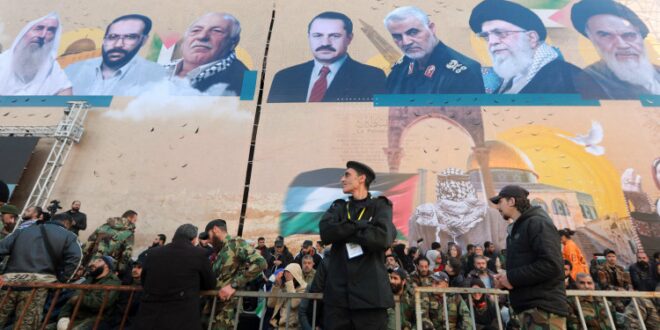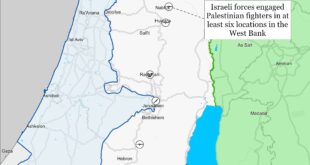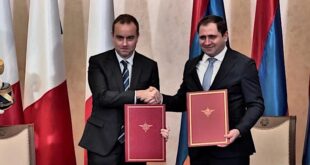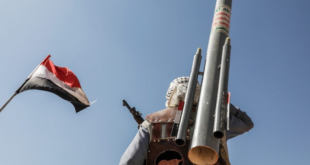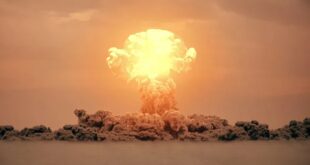Seventy-five years since the establishment of the Jewish state, Israel has found itself facing a relentless, unprecedentedly severe political crisis with profound national security implications exacerbated by separate regional developments. Domestically, Prime Minister Benjamin Netanyahu’s judicial reforms prompted multiple weeks-long waves of massive street protests, to the extent that former head of government Ehud Barak called the draft bill “the assassination of the Declaration of Independence and the worst crisis since the formation of the state.”
At the same time, in the regional theater, Iran has amplified its anti-Israeli activities, undermining the efforts Israel undertook during 2020-22 to build up a common security front with neighboring Arab states against Tehran as well as to intensify various military operations against Iranian interests. This year, Iran has been able to mollify and manage the differences with its Arab neighbors and, after pursuing de-escalation with Saudi Arabia, there are now reports it may normalize relations with Egypt in the coming months. At the same time, despite Western and Israeli pressure and threats, Iran has expanded uranium enrichment operations and the development of its military capabilities. Each of these tactical measures can be considered a clear Iranian response to Israeli actions. But the main challenge to Israel has come from Iran’s decision to launch the so-called “unification of the arenas campaign,” which extends the bilateral confrontation to the strategic level.
Why confrontation?
While Iran and Israel had warm relations during the rule of the Pahlavi royal dynasty in Tehran, the two countries progressively became ideological enemies and strategic rivals in the Middle East following the victory of the Islamic Revolution in 1979, spearheaded by Ayatollah Ruhollah Khomeini. Ideologically, Khomeini considered the establishment of Israel part of the plan of the colonial powers to influence the Middle East; he thus saw it as an illegitimate state, occupying the territory of a Muslim country, Palestine, and seeking to weaken the unity of Islamic societies. In this vein, any political, economic, and military relations with Israel would be strengthening the latter and betraying Islam.
Preventing the growth of Israel’s regional influence eventually became Iran’s strategic goal, which, in turn, translated into outright hostility. Tehran’s opposition to the Israeli-Palestinian peace process can be understood in this context. Though such an approach was not limited to one side. Some experts believe that, as part of its strategic-level struggle against Iran, Israel had a role in surreptitiously fueling the Iran-Iraq War in the 1980s as a way to erode the power of both, and it has been accused of globally promoting Iranophobia since the 1990s.
What is the unification of the arenas campaign?
As part of its confrontation vis-à-vis Israel, Iran developed a deterrence policy based on creating a defensive buffer in the eastern Mediterranean involving a number of regional non-state allies. Today, the “unification of the arenas campaign” is the most complete and up-to-date version of that strategy.
A product of rethinking the experience of 75 years of confrontation with Israel, this campaign seeks, first of all, to improve operational coordination between the different non-state militant groups within the loosely bound coalition known as the Axis of Resistance, which Tehran has sought to direct against its most important enemy by “leading from behind.” The second purpose of the campaign is to expand the geography of the battlespace for the geopolitical encirclement of the Jewish state, boost the deterrence capabilities and effectiveness of allied anti-Israeli forces in possible future battles, and seize the military initiative over Israel.
Politically, the campaign is rooted in the ideology of Iranian leaders, who heavily emphasize the necessity of confronting Israel. Unlike the late Egyptian President Gamal Abdel Nasser’s attempt to exploit shared ethnicity — namely pan-Arabism — to confront Israel, Iranian leaders chose to focus on the idea of “the unity of the Islamic world” to increase their strategy’s effectiveness. Selecting the last Friday of Ramadan, the Muslim holy month, as Quds Day — an annual pro-Palestinian event and condemnation of the occupation of Palestinian territories — was the first and most important political symbol of Iran’s efforts to unite Muslims against Israel.
Strategically, the unification of the arenas campaign can be seen as a response to Israel’s preemptive war doctrine designed to maintain the latter’s military superiority in the regional balance of power. The doctrine is the result of Israel’s security rethinking after experiencing a surprise attack by a multi-state Arab coalition in October 1973 (popularly known in the West as the Yom Kippur War), and it has continued to manifest as the “Campaign Between the Wars” approach, particularly after the increase of Iran’s presence inside Syria.
Operationally, it has roots in the 2021 Saif al-Quds war, during which, for the first time, a joint command structure was formed to coordinate information sharing and operations between Palestinian groups under the supervision of Iran on the one hand and Lebanese Hezbollah on the other. The battle showed that Tehran would not necessarily respond to Israel’s offensive actions from the same or a single specific front. Rather, Iran would make sure it can determine the geography of the battle and be able to launch a possible surprise attack against Israel. This process entered a new stage in 2023 with two notable incidents: an explosion at the Megiddo junction and the launch of rockets from southern Lebanon in response to Israeli attacks on Palestinians at the al-Aqsa Mosque. These actions were a clear signal to Israel: declaring the Axis of Resistance’s readiness for war on several fronts if Israel disregards Iran’s and its allies’ red lines.
Pillars of the unification of the arenas campaign
The unification of the arenas campaign is based on four main pillars, which together form the front line against Israel and the capability to encircle it.
The Gaza Strip is the southern front and main engine of Iran’s regional campaign against Israel; Supreme Leader Ayatollah Khamenei pointedly refers to it as the “center of resistance.” The two main actors Tehran supports there are Hamas and Islamic Jihad, whose role became accentuated when they proved their determination to continue the struggle, maintain constant pressure against the Jewish state, create security disruptions, and, as a result, raise Israel’s security costs. A relatively recent example of this was evident during the May 2023 war, when, despite the high casualties suffered by the Islamic Jihad group, more than 1,100 rockets and mortars were fired into Israel from the Gaza Strip, prompting Israeli forces to activate the David’s Sling air-defense system for the first time in recent years.
The West Bank is the central front and the Achilles heel for Israeli national security. Not only is the West Bank relatively close to three key cities and military-economic centers — Jerusalem, Tel Aviv, and Haifa — but the presence of Jewish settlers and more than two million Palestinians provides a rich environment for Iran to open a new front. Especially in the last two years, Israel has faced an increase in individual armed struggles by young West Bank Palestinian groups such as the Lions’ Den, Jenin Brigade, and Balata Brigade. Tehran’s calculations of Israel’s vulnerability in this region have, thus, led to the policy of arming sympathetic militant forces there, which Khamenei has identified as “the key to bring Israel to its knees.” What can increase Iran’s relative success in the West Bank is the intense dissatisfaction of the Palestinians with the performance of the Palestinian National Authority, a boost to the popularity of Hamas and Islamic Jihad, and an increased preference for war with Israel as opposed to negotiation.
South Lebanon makes up the northern front and, militarily, is the most powerful part of the campaign to confront Israel; it is centered on Lebanese Hezbollah, Iran’s most important non-state ally. The militant group’s substantial military capabilities and battlefront experience, such as in the 2006 armed conflict with Israel and the Syrian civil war, have made Hezbollah a key frontline commander of the unification of the arenas campaign against Israel. The management of the northern front is carried out by the Radwan unit, Hezbollah’s elite force, which has conducted several commando raid exercises in the framework of the “strategic and operational plan of conquering Galilee.” In a video the unit published in February 2023 simulating an attack on northern Israel, it sent a clear message to the Jewish state by referring to a verse from the Book of Jeremiah: “O ye children of Benjamin, gather yourselves to flee out of the midst of Jerusalem: for evil appeared out of the north, and great destruction.” The Radwan force’s summertime action of erecting two tents in the border area of Kafr Shuba and Shebaa Farms as well as the threat to Israel by Hashim Safiuddin, the head of Hezbollah’s Central Council, regarding the militant group’s readiness to enter Galilee must all be evaluated in this context.
In addition to southern Lebanon, the Golan Heights — the eastern and northeastern front of the campaign — is also under the management of Hezbollah forces. The prominent presence of Lebanese Hezbollah in the Syrian war and the establishment of its affiliated forces in Quneitra and Daraa provinces have laid the groundwork for the creation of the Golan front. According to some reports, these forces operate in the form of two units, the Southern Command and the Golan File, which consist of Lebanese Hezbollah and local Syrian militia fighters near the border with Israel. Considering the strategic importance of this region, the presence of allied non-state forces there can expand Iran’s capacity to carry out retaliatory or deterrence actions against Israel.
Outlook
As mentioned, the front line of the confrontation with Israel is currently localized in four main zones. However, what can add to Israel’s challenges in facing this campaign is the possible addition of at least two additional fronts. First, Iran-backed militias in Iraq, especially Kata’ib Hezbollah and the Nujaba Movement, have long declared their readiness to join the war against Israel. Considering their experience in the Syrian war and their close relations with Lebanese Hezbollah, it can be expected that in the event of an all-out war between Iran and Israel, these two groups would be deployed on the Golan front. Second, considering the announcement, in spring 2018, of the Yemeni Houthi leader’s readiness to fight against Israel and the similar closeness of this group to Lebanese Hezbollah, one should not dismiss the possibility that Houthi fighters could be deployed to southern Lebanon, thus strengthening Iranian proxy firepower on the northern front. And doubling Israel’s challenges stemming from the Houthis is their possible attacks on the southern Israeli city of Eilat and the country’s commercial interests in the Red Sea. In this context, half a century after October 1973, Iran is attempting to once again cast the shadow of a potential multi-front war over Israel.
While in the past, some Iranian politicians, such as former President Mohammad Khatami, did not hide their hope for a two-state solution, these kinds of voices are no longer heard in Tehran. Rather, over the last two decades, the Islamic Republic has increased its determination to confront Israel because of the lack of noticeable change in the Palestinians’ situation three decades after the signing of the Oslo Accords and the expansion of the Israeli settlement policy in the West Bank. Moreover, the weakening prospect of a two-state solution, the increase in Israel’s societal divisions after Netanyahu’s reelection, and the relative success of Iran’s arenas campaign, particularly in the West Bank, have all fueled top Iranian officials’ expectations of Israel’s decline. As Khamenei noted earlier this year, “Israel’s deterrence power is coming to an end. This is what [former Israeli Prime Minister David] Ben-Gurion warned: that if this happens, our regime — Israel — would face a problem.” It seems that the longest cold war in the Middle East, the conflict between Iran and Israel, will continue in the third decade of the 21st century. However, it can be hoped that through mediation by countries that maintain good relations with both sides, including China, Russia, the United Arab Emirates, and even Saudi Arabia (if Saudi-Israeli normalization proceeds), the regional twilight struggle between Iran and Israel will not turn into a full-scale direct military confrontation. Establishing a hotline to reduce the risk of miscalculation between Iran and Israel and prevent a large-scale war is the least that can be done in this field.
 Eurasia Press & News
Eurasia Press & News
